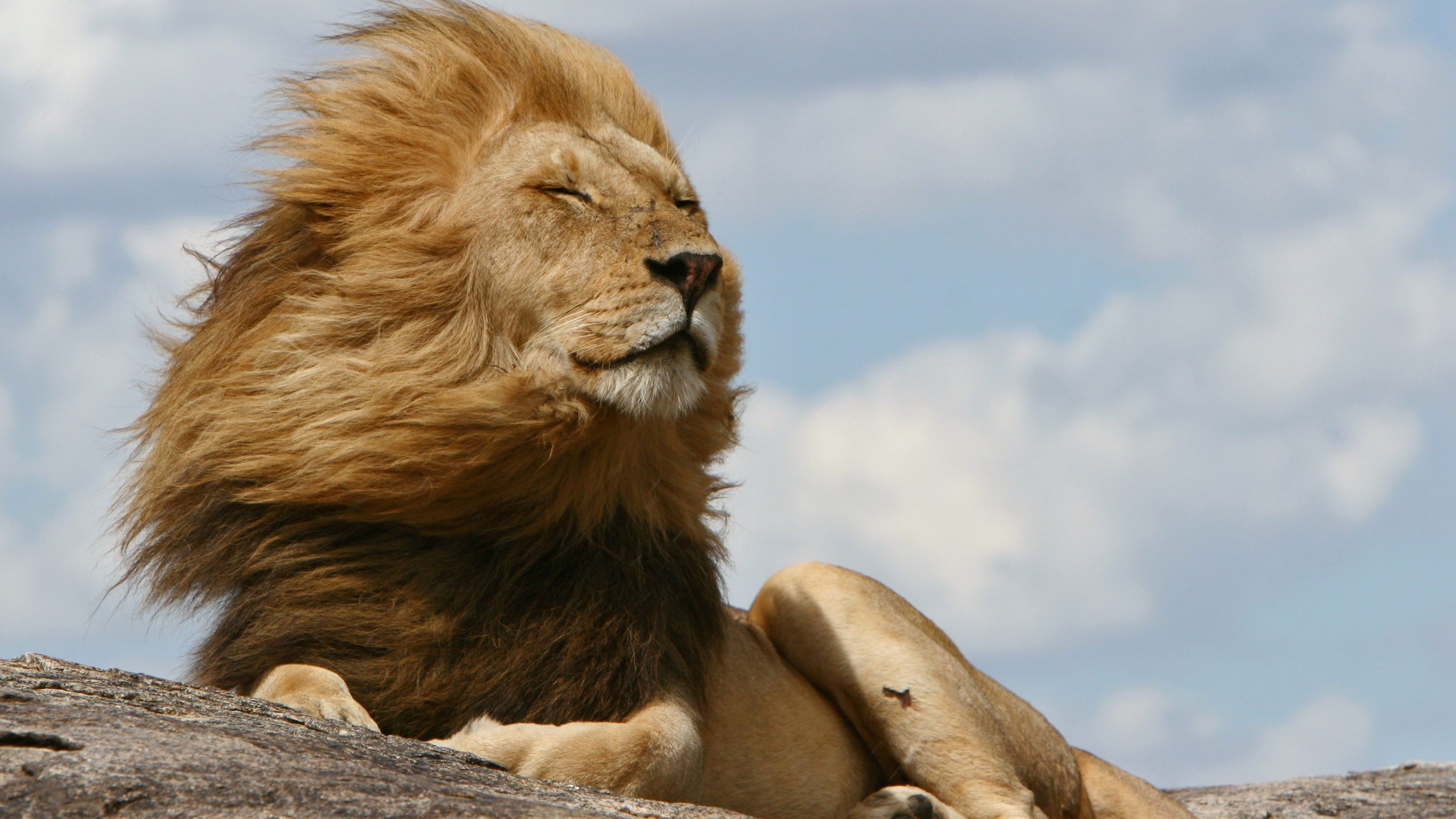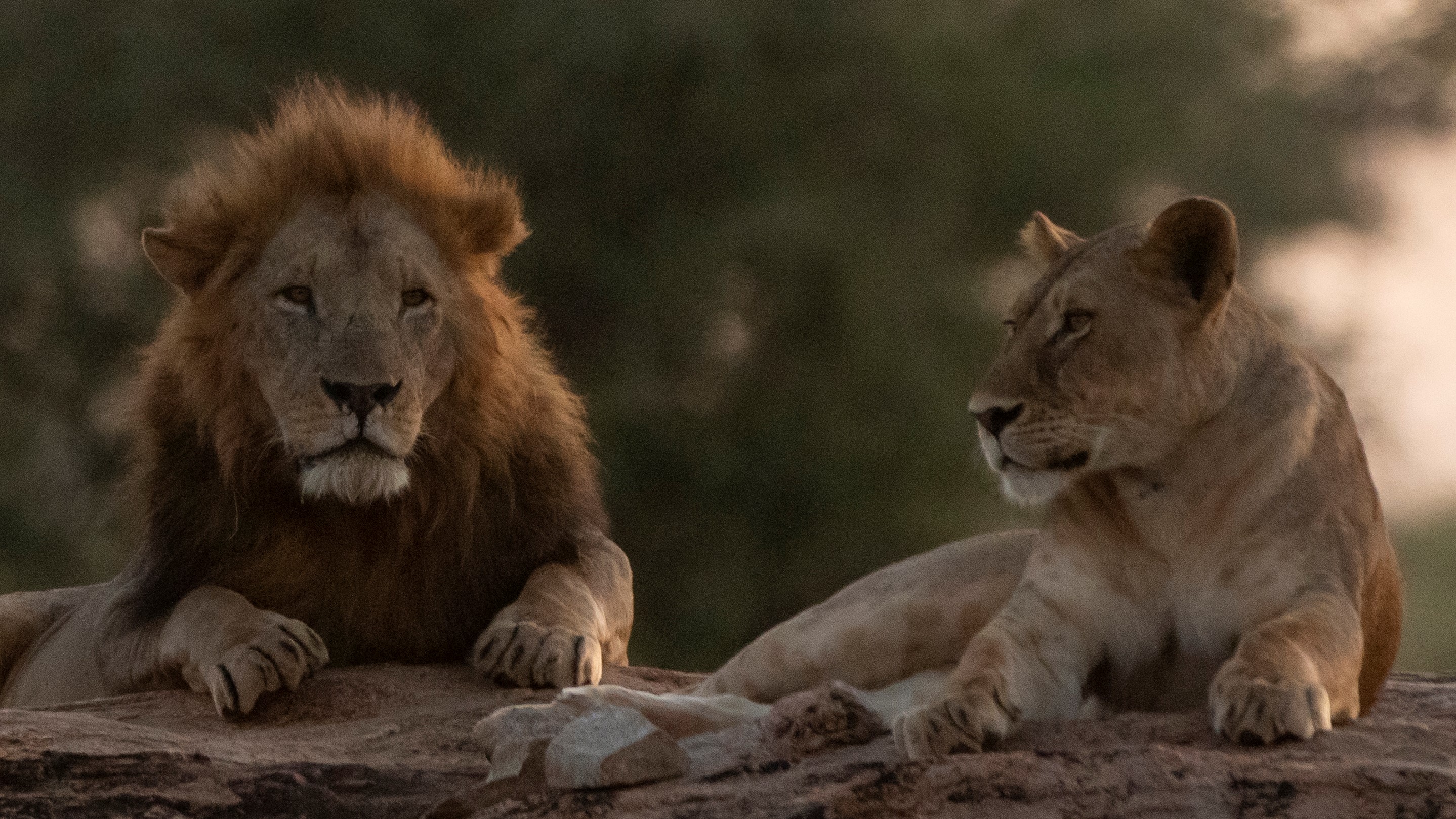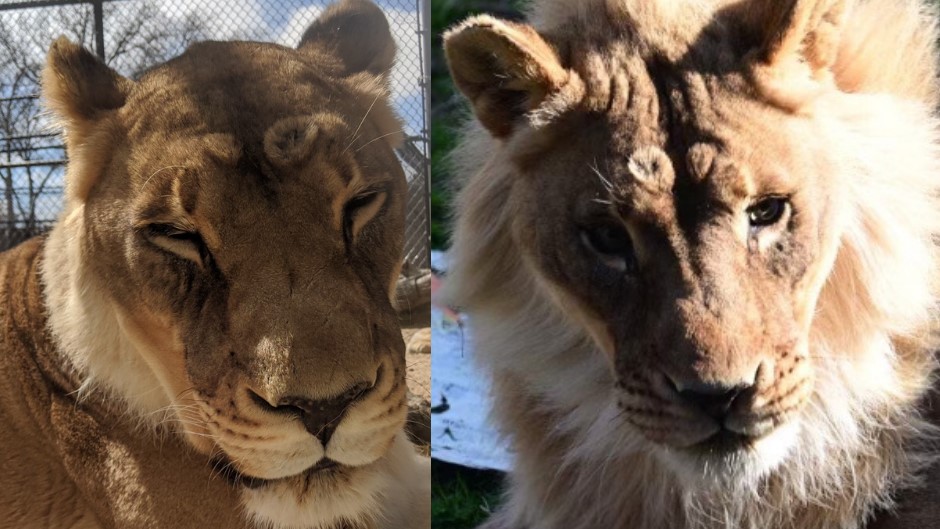Why do lions have manes?
Lion manes are generally there to impress and intimidate — but not all males have them, and in some circumstances, lionesses are also known to sprout fuzzy facial hair.

No animal species is more emblematic of the African savanna than the lion, whose males sport lustrous, shaggy crops of hair around their necks. But why do lions have manes?
Those resplendent tresses are there to impress other lions — both potential mates and potential rivals — Bruce Patterson, a retired mammal researcher at Chicago's Field Museum, told Live Science. Male lions (Panthera leo) have big heads and big necks, and manes exaggerate those features, Patterson said.
Some manes may be more impressive than others. A 2002 study looking at sexual selection, temperature and different lion manes found that darker hair seemed to be more attractive to females, and also correlated with better nutrition and higher testosterone levels. In addition, male lions with longer manes seemed to be more intimidating to other males, the researchers noted.
"It's an intimidation to rival males, who see a giant haystack moving towards them and get out of Dodge," Patterson said.
But some male lions don’t have manes at all — and that’s because having a dark, shaggy mane might also come with some disadvantages.
Mane size and shape driven by heat

Despite the benefits that come from impressing other lions with a heavy mane, wearing a thick scarf around your neck all day while out in the sun isn't ideal — and the 2002 study suggested that maned males got hotter than the un-maned females. High body temperatures can cause trouble during sperm production, and the authors point out that dark-maned males tended to have more abnormal sperm.
Related: Why did this zoo lion murder the father of her cubs?
Sign up for the Live Science daily newsletter now
Get the world’s most fascinating discoveries delivered straight to your inbox.
This heat problem may be the reason why some lion populations have very small, almost non-existent, manes. In regions such as the Serengeti or Ngorongoro Crater of northern Tanzania — which are thousands of feet above sea level, with temperatures regularly dropping below 60 degrees Fahrenheit (16 degrees Celsius) — male lions often have big, fuzzy manes.
But in Kenya's Tsavo East National Park, which is closer to sea level and hotter, male lions have very small, almost non-existent, manes. A lion with a big mane wouldn't be able to walk very far during the day or move too far from water, Patterson said. That would put them "at a disadvantage, relative to a lion that doesn't have a big blanket over its shoulders," he said.
This can also apply to lions outside their natural habitats. One of Patterson's studies showed that among zoo lions in North America, individuals in colder-weather cities tended to have thicker, denser manes.
Female lions with manes

Female lions can also grow manes, though this is rare. In 2016, researchers announced five lionesses had grown manes at Botswana's Okavango Delta. One of the lionesses also developed typically masculine behaviors, such as mounting other females.
In 2018, Oklahoma City Zoo announced that an 18-year-old lioness named Bridget had mysteriously sprouted a "mini-mane." Blood tests later revealed a benign tumor had caused elevated levels of the hormone androstenedione, which can lead to masculine attributes.
And in 2020, an elderly lioness at the Topeka Zoo in Kansas started growing a mane after the only male in the pride died. Zookeepers said at the time it appeared to be a "random event" that wasn't connected to competition or evolution.

Ethan Freedman is a science and nature journalist based in New York City, reporting on climate, ecology, the future and the built environment. He went to Tufts University, where he majored in biology and environmental studies, and has a master's degree in science journalism from New York University.










